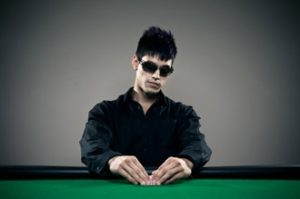
Bluffing is a slippery slope in poker. Players usually think they know it perfectly, but there are also many subtleties that most players miss.
One of the most important aspects is bluff equity. This is the equity you get from being able to bluff on the next street. If you imagine someone dealing two napkins - two cards that have no relation to the cards on the board - that person can still win and even beat some really bad opponents. The entire equity of such a player comes from his bluff equity, or his ability to win the pot with his bluff.
Sometimes it is very important to consider the equity of a bluff and to stay with it, rather than folding at an early stage, as this can be a valuable decision for our equity. Most poker players forget this, but negative EV decisions early in the street can turn into positive EV due to profitable bluff situations that arise during the game. An analogous situation exists with implied odds. According to the implied odds, a negative EV decision on this street can become profitable due to the probability of cashing in on the next street. With bluff equity it is exactly the same. You can continue to play a hand that has a slightly negative EV because a good bluffing opportunity may appear on the next street. Usually people feel much worse in reality using this explanation, because they are rarely sure of a positive EV and the possibility of hitting a straight or three of a kind. But EV from value hands and EV from bluffs are the same - EV is EV.
It should be noted that in order to use bluff equity to support your game decisions, you need to make sure that the bluff will actually produce +EV. You also need to read your opponent well and know exactly what he is thinking. If you trust your reading, the actual EV of the bluff will be very close to the projected EV of the bluff.
For a confident player it may be a good idea to rely on bluff equity, but if the player's confidence is low, then more caution should be exercised in using this equity as an explanation for -EV play.
Ironically, players rarely consider this when it comes to implied odds. They will chase sets and draws, assuming that if they hit the ins, the opponent will pay them for it. Most people rarely admit that when they do hit, it doesn't pay off. And this is usually because of their own bet'in sizes or the threadiness that alerts the opponent. It is probably a habit that players learn from playing low stakes (where there are a lot of sets and draw catches, hoping that the fish will pay for it).
Sometimes this is also called residual habits. They can be a problem if they don't disappear when you move on to a more challenging game. Most residual habits like this will prevent the mind from going into subconscious calculations (it depends on how intuitively the pot reacts to probabilities), the brain will simply not process the difference between a 20% and a 10% profit in a higher level game. This means that you always have to be alert to the possibility of drawing erroneous and outdated conclusions.





